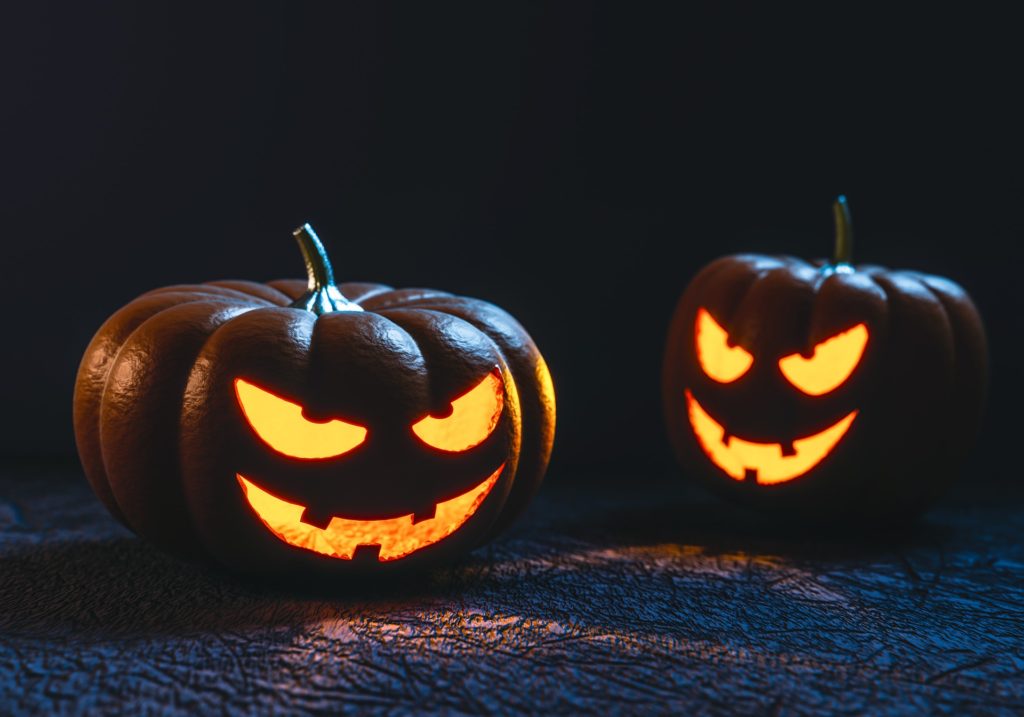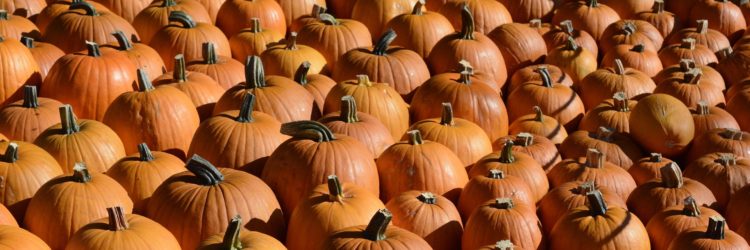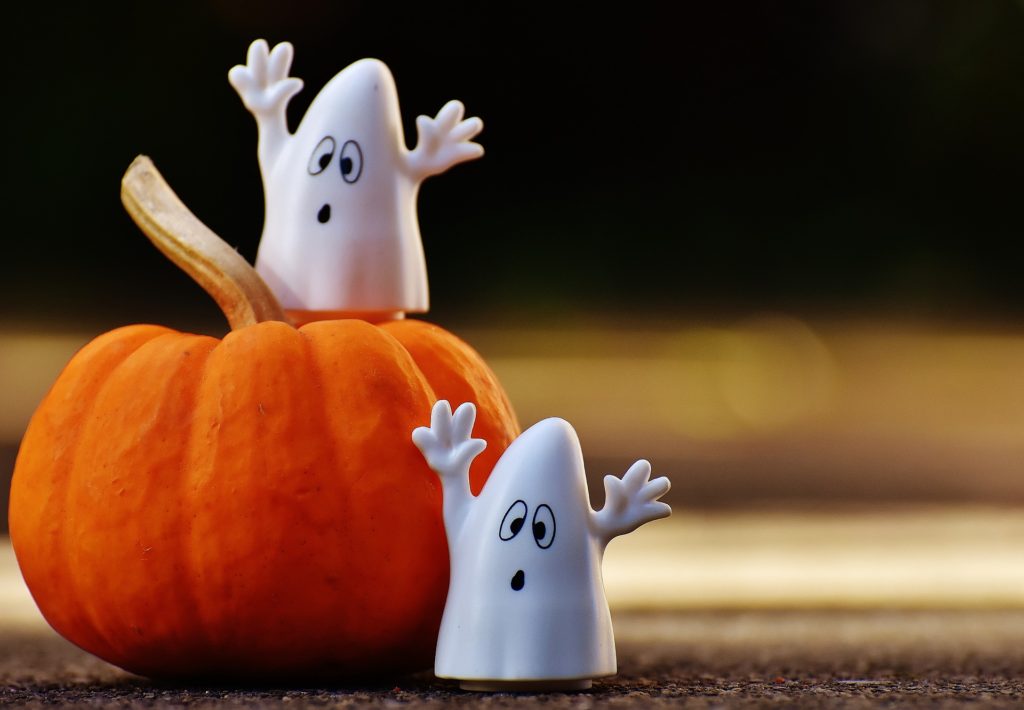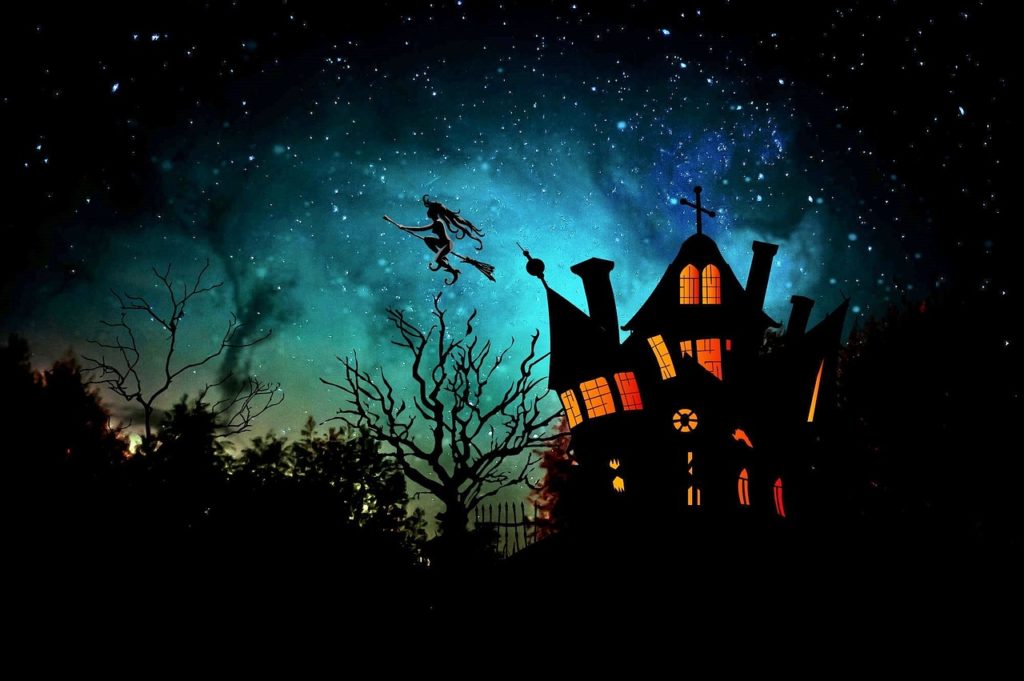Q: Why are black and orange the Halloween colors?
A: Our autumn colors have an agricultural origin. Pumpkins, and squashes with orange flesh, were important foods for indigenous Americans and early European settlers in the Americas, and squashes were ready for harvest at this time. Squashes of all kinds are native to Central America although they are now cultivated around the world.
The tradition of carving pumpkins so they resemble grinning skulls originated in Ireland, among the Celts. They didn’t have pumpkins, but carved potatoes and turnips into faces and lanterns not as decorations but to keep evil spirits away.

Halloween is associated with the color black because the celebration of the religious feast day on November 1 began the night before, after evening prayers. Black has always been associated with nighttime and the unseeable, and among those with imperfect faith, with mysterious and fearful things and deeds.
Decorating specifically for Halloween with the colors orange and black begins in the 20th century in the United States, when people had houses, yards, and income to spend on holiday-specific decorations.
Q: Why is Halloween a spooky holiday in some countries, when in others it is a serious religious holiday?
A: Halloween is the night before a traditional religious feast day, November 1, “All Saints Day” or “All Hallows Day.” All Hallows Day starts with evening prayers on October 31, so the last hours of October 31 are considered part of the holiday: “All Hallows Eve.” That’s why Halloween festivities happen after dark on the day before. It’s like Christmas Eve being part of Christmas Day.
“Hallowed” means holy. Saints were human beings honored after their deaths for leading especially pious or holy lives: apostles, martyrs, bishops, abbots, monks and nuns, visionaries, miracle-workers, defenders of the faith and so on, from beggars all the way up to emperors. Saints are religious role models. There are so many saints that their celebration is an important day in the religious calendar of Roman Catholics, Anglicans, and some Protestants. “Een” is a contraction of the word “evening.” So Halloween means “evening of the holy ones,” and in days past, on Halloween night you’d be in church.
In majority-Catholic countries November 1 is often a national holiday, and religious observances and parties begin the night before, just as for Christmas. In fact the English used to call All Saints Day started with evening prayers the night before. It’s like Christmas Eve, now considered part of Christmas Day. The English used to call All Saints Day “Hallowmas.” The Christian holiday can be traced back to eighth-century Europe. And it’s been suggested that, like Christmas, November 1 was chosen because it paralleled a similar pagan feast day.
The next day, November 2, was in Europe “All Souls Day,” another religious day honoring all the dead, saints and not. In some countries it is still an obligation for families and friends to visit graves of their dead loved ones, bringing offerings of flowers and maybe food, photos, or symbols of the things the departed enjoyed in life, such as toy cars, to leave on the graves. They have done this for centuries and still do. On All Souls’ Day the living provide company for their departed loved ones, maybe even spend the day in the graveyard with the whole family, praying, lighting candles, and serving food.
Q: What is the Day of the Dead, and is it scary?
A: Mexico’s three-day Day of the Dead celebration goes back 3,000 years, before Christianity, into Central American pre-history. It used to take indigenous people a whole month to honor and celebrate their dead. When the indigenous people of modern-day Mexico converted to Catholicism, they were inspired or prodded to move this ancient celebration from summer to the days October 31 and November 1 and 2, so the traditional Day of the Dead rituals did not die out. Now the holiday and its rituals are considered a national cultural treasure and celebrated throughout Mexico and in Hispanic communities living in other countries.
During the Day of the Dead holidays, schoolchildren build altars to honor dead children. The next day, dead adults and saints are honored. Mexican tradition says that if you don’t visit your dead loved ones during the Days of the Dead, they come looking for you. That last part is the part Americans love, and that’s why Americans are fascinated with Mexico’s Day of the Dead. The little skull-shaped candies, skeleton dolls and other trinkets are supposed to bring good luck. They’re not for scaring people.
These people accept that death is part of life. While the death of a beloved person saddens the survivors, death was not the tragic and traumatic calamity it is today, to be avoided at all costs, even if that means keeping very sick or brain-dead people hooked to machines that breathe for and feed them. People in previous times also believed the souls of their deceased relatives were in heaven and perfectly happy, and hoped that when their time came, their own souls might join them there. We of the 21st century are the ones afraid of and horrified by death. At the same time we are titillated by stories and pictures about murders and dead bodies, whether the stories are fictional or real.
Q: Do real witches celebrate Halloween?
A: Wiccans and pagans think Halloween costumes and games are silly and don’t participate. Instead, they observe their own important holiday, called Samhain. It’s their harvest festival—such festivals go back to the earliest historical records. There’s feasting and partying, but there’s also time during Samhain for serious reflection and remembering the dead. Samhain is an ancient Celtic pagan holiday Christianized and adapted into the Christian calendar as All Hallows Eve, All Hallows Day, and All Souls Day, celebrated starting October 31.


